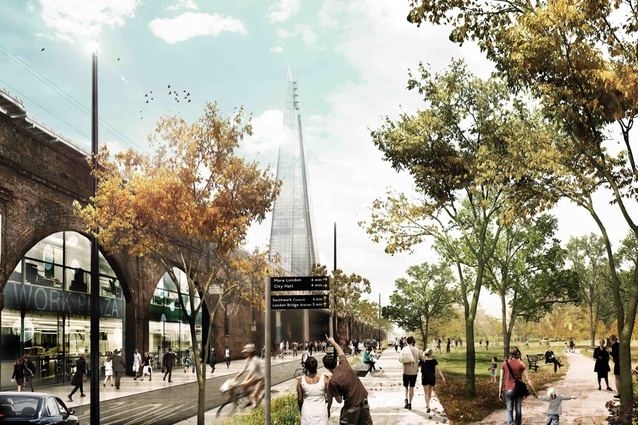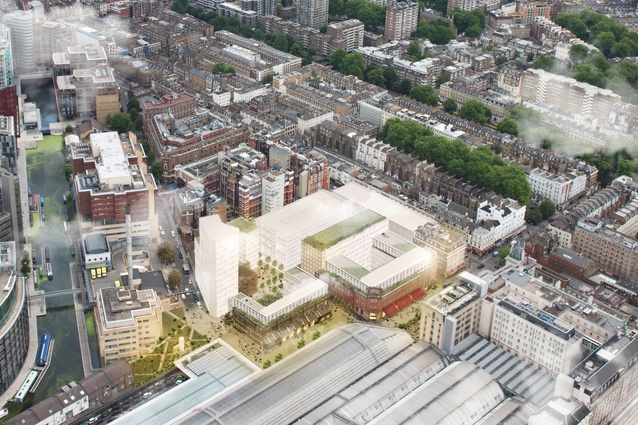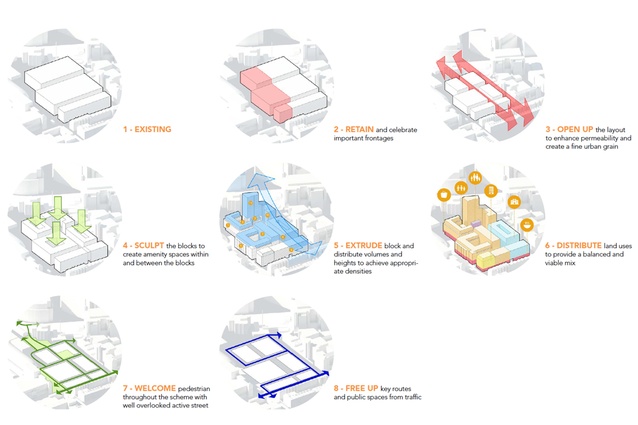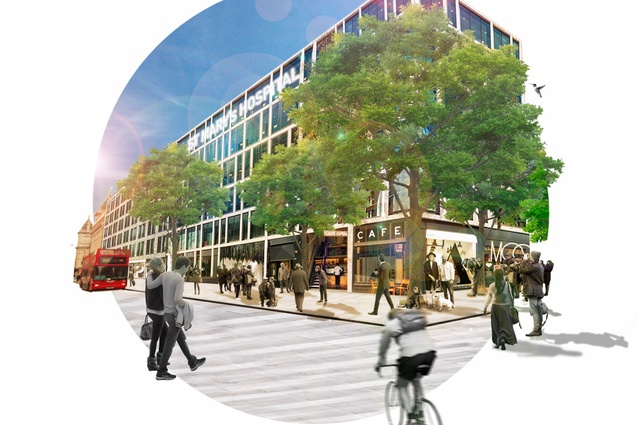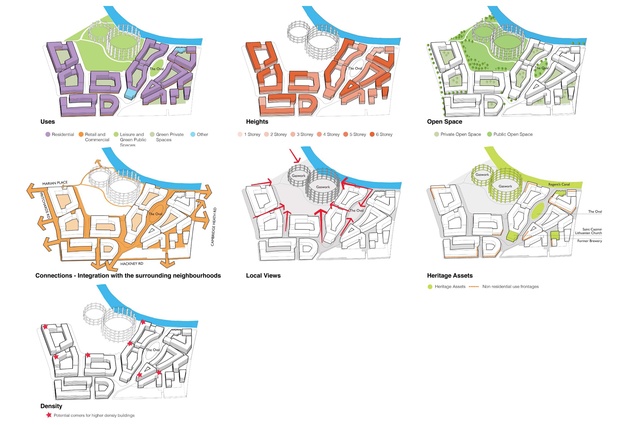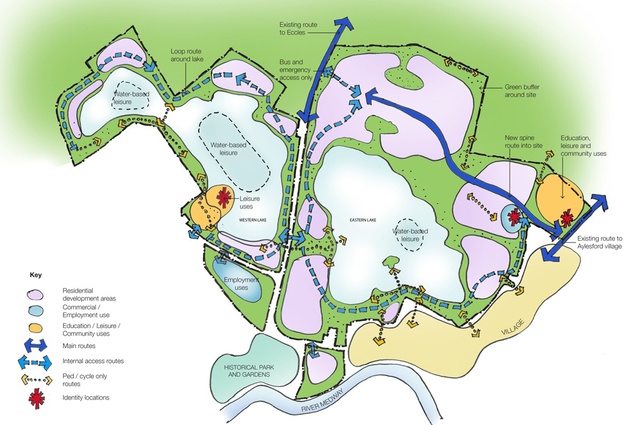Quality of place: Amanda Reynolds
Amanda Reynolds is a New Zealand-born architect and urban designer with over 25 years experience in master planning, urban design, architecture, community engagement and design review on a range of projects in the United Kingdom and overseas. She started her own studio AR Urbanism in London in 2007 and hasn't looked back since.
Here, Amelia Melbourne-Hayward chats with Reynolds about place-making and how we can better improve our cities.
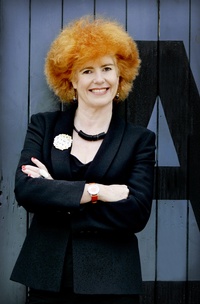
Amelia Melbourne-Hayward: You studied architecture at the University of Auckland. What drew you to get so heavily involved in urban design?
Amanda Reynolds: Architecture is still of huge interest to me but I was always drawn to context and strategy, and after working in London for several years in the 1980s, the importance of context seemed to be much stronger than the ‘objects’ placed in it. I am instinctively a better ‘big picture’ thinker and get frustrated with too much detail – although, like all architects, I am still capable of obsessing about details and finishes when it comes to my own house!
AMH: What led you to set up your own practice AR Urbanism in London?
AR: It was one of those cases of ‘never say never’. I had always said it would be too hard to do my own thing in London, however when the large practice I was working for (Llewelyn Davies, as urban design director) sold the planning and urban design team to a multi-national company without a strong design focus, I could see that I needed to rethink my immediate career direction. At the same time an existing client offered me ongoing work if I set up a consultancy, so I took that step gingerly 8 years ago and have not stopped – now I’m sure I’m unemployable!
AMH: What sort of projects are AR Urbanism involved in presently?
AR: We do a range of medium-sized to large scale projects – my favourites are urban site masterplanning projects, usually working with other architects and a range of consultants on residential-led mixed-use projects consisting of anything from 50 to 5,000 units. These are always complex and challenging but can be the most productive design projects.
We also do more public realm-based town centre master plans and run community engagement programmes, both as part of our commissions but also as freestanding projects for clients like local authorities and housing associations. I also do a certain amount of expert witness work on planning appeal cases, which is somewhat legalistic but intensive work and usually involves exploring complex urban situations.

AMH: What is the design philosophy that drives the company?
AR: ‘Making better cities/neighbourhoods’ is a bit of a simplistic answer to the question, but that concept does underpin everything we do. We also use the now somewhat hackneyed phrase, ‘place-making’, to describe our design philosophy. It does sum up the core of our approach to urbanism, defining our main focus as the context rather than the forms (buildings) that define the context – although the mass, scale, use and finish of those forms is also of interest and the final quality of place is the interaction between these two, hence our preference for working with ‘building architects’ on major projects, although we generally design the fundamental structure, scale and form of the project with other architects working on the individual buildings.
AMH: What would be, in an ideal world, your first urban design changes you would make to Auckland?
AR: Auckland needs to apply the three basic rules of good urbanism: densify, densify, densify – especially to the inner city and along main transport corridors. Improving bus and rail transport and adding safer cycling opportunities is also essential (and seems to be happening!), while supporting what Auckland already does very well, which is creating well-landscaped public spaces and having great public access to the water and volcanic cones.

AMH: Which is your favourite city in the world for its design principles, and why?
AR: Apart from a handful of planned cities (Canberra, Brasilia, Washington, Cerda’s Barcelona, New Delhi…), most cities have grown organically in different ways at different times and only exhibit ‘design principles’ through an analytical process. That said, I love central London for its highly liveable qualities – a wide variety of places, an urban density that supports layers of activities, great public transport and of course world class culture. Another of my favourite cities is the ‘dead’ city of Pompeii, which with its simple grid of streets and major central square, could be a blueprint for a small modern city today – leaving out the slaves perhaps.
AMH: What do you think the future of urban design is in London, and in Auckland?
AR: These two places have very different problems although they share some as well – insanely high housing prices for instance, both due to a high influx of both money and people. These are two things which also make cities vibrant and attractive places to live, and finding a balance needs to be sought, but it is a tough problem.
Auckland is more like its sister Aussie cities in respect of growth, change and potential. It will always be the engine to New Zealand’s energetic growth and needs to lead from the front in terms of urban design quality to become and remain a ‘world class’ location.

Auckland seems to be going in the right direction in urban design terms in some places (parts of the city centre), but the Kiwi tradition of the detached house with several cars parked outside can no longer be the default setting for housing provision. Auckland’s younger generations and diverse immigrant groups are creating new demands and opportunities and the city’s urban design initiatives need to respond creatively to these pressures as well as the more traditional ones like an aging population.
London is also going through a period of major change with an ongoing and massive population increase – 100,000 people a year currently. This is challenging the low density, 3-storey nature of much of the city, with large urban sites being redeveloped for residential at 10-30 storeys, and smaller sites at 6 storeys. This transformation is producing much debate about housing character, street character, heritage and conservation and the need for more public open space.
London is the greenest and lowest density European capital and is well known for its urban parks which are well-used and well-protected. Creating new models for new urban places and spaces is one of London’s most interesting urban design challenges.
AMH: What are three things that you believe are essential to a successful city that works well and keeps people happy?
AR: The three most important qualities that can be developed in any city are: walkability, great public realm and good public transport – these are things that urbanists can and should control – via a political framework – and they will contribute to positive outcomes in every measure of human civil society from crime and health levels through to economic growth, plus, of course, human happiness.
Three other really helpful things are: good weather, a water’s edge location and good food – the first of these is in the lap of the gods, the second we’ve been given in abundance and as for the third, New Zealand punches well above its weight, so its time to get the urbanists in to improve the cities in response.

